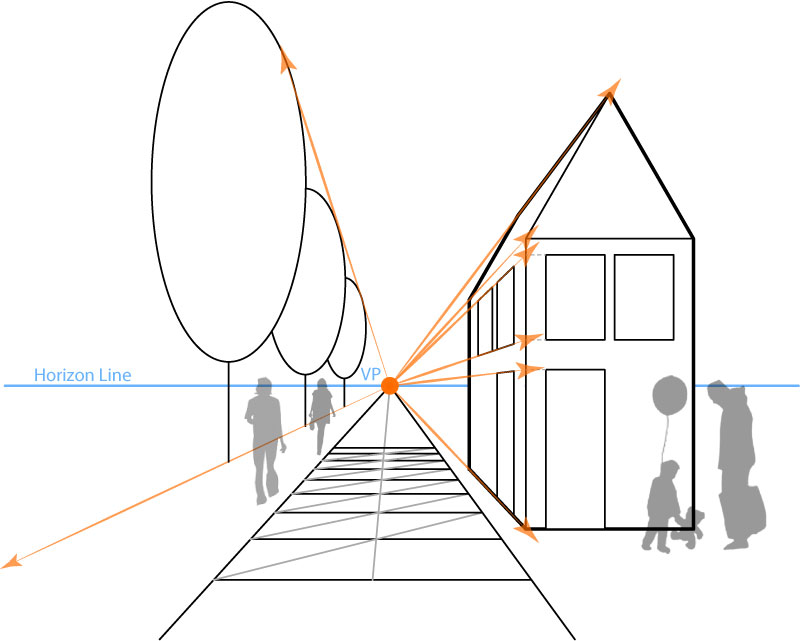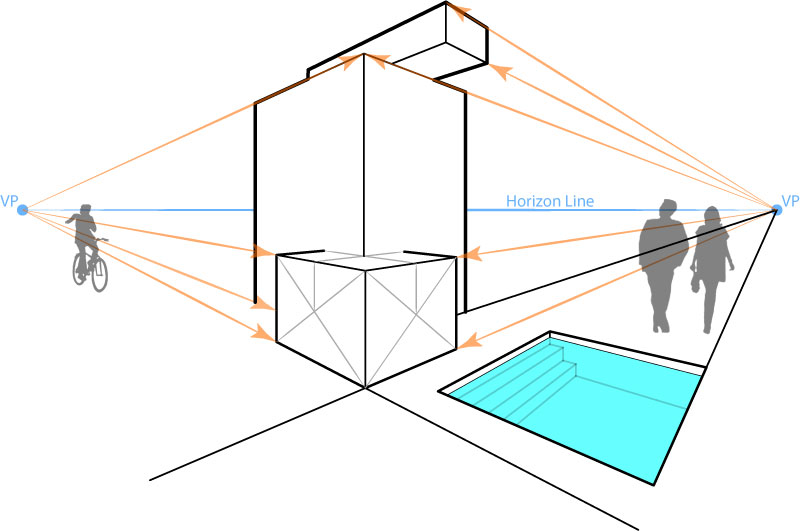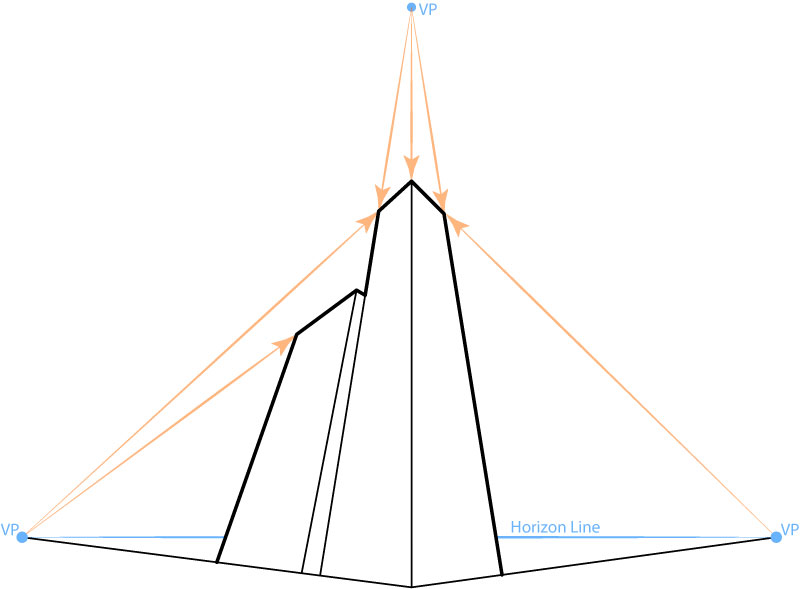In 1413 in Florence, Filippo Brunelleschi set up a mirror in the dark door way of the Duomo to bounce light back on to his working surface. This light made an image of the scene, the baptistery, before him. As Filippo traced the reflected image he noticed that the parallel lines on the baptistery, if continued, would all converge at the same point on the horizon line. Diagram 1
Filippo just discovered linear perspective.

Linear perspective is a form of geometry that permits the precise (measurable) construction of three dimensional objects on to a two dimensional surface. Its primary components include the Horizon Line (we’ll look at this more soon) and at least one Vanishing Point.
The Vanishing Point sits on the Horizon Line and all parallel lines converge to the same Vanishing Point.
Here is an example of a One Point Perspective. Diagram 2

We know we are looking at a One Point Perspective if the face of the object is closest to and parallel to our plane of view or working surface. The lines perpendicular to the picture plane will converge on the single vanishing point.
If the corner of an object is closest to the viewer the perpendicular lines on either side of the corner will converge on separate vanishing points. This is an example of a Two Point Perspective. Diagram 3

A third vanishing point can be added for large objects. This 3rd point will be added above or below the Horizon Line depending on whether we are looking up or down at the object. This is an example of a Three Point Perspective. Diagram 4

The point of this post is to introduce the geometry of Linear Perspective. There’s plenty more to it than the above but that will have to wait for two reasons. 1. There’s plenty of good books, videos and websites that cover the basics of Linear Perspective. 2. A little understanding of Linear Perspective aids our approach to Dynamic Symmetry…
A common error of ignorance is to maintain that what one does not know does not exist.
